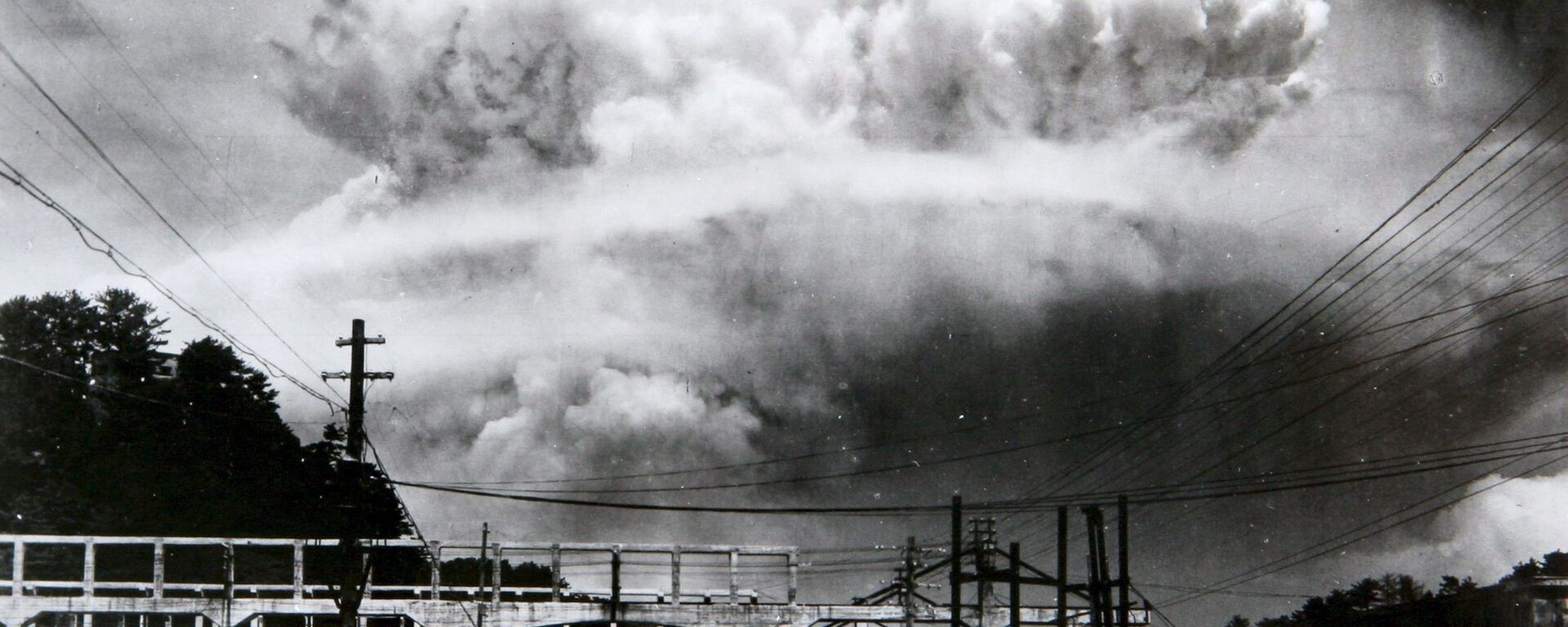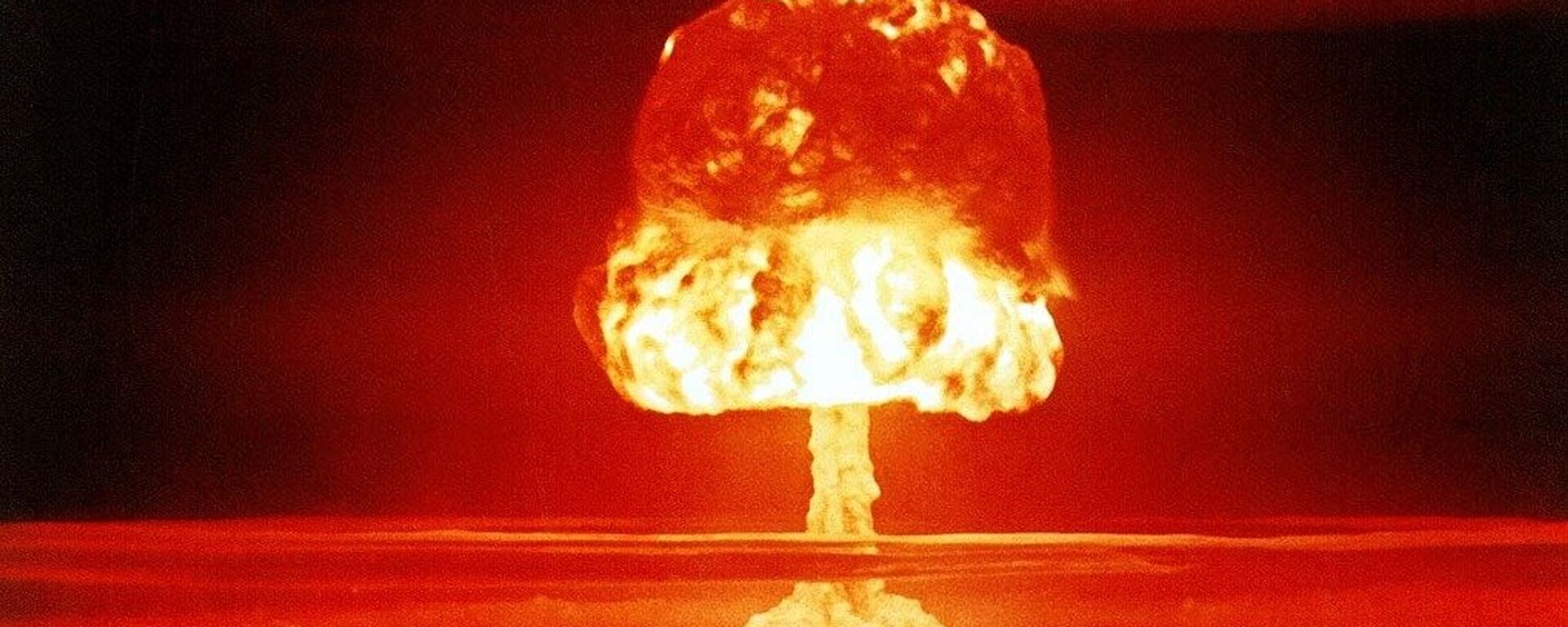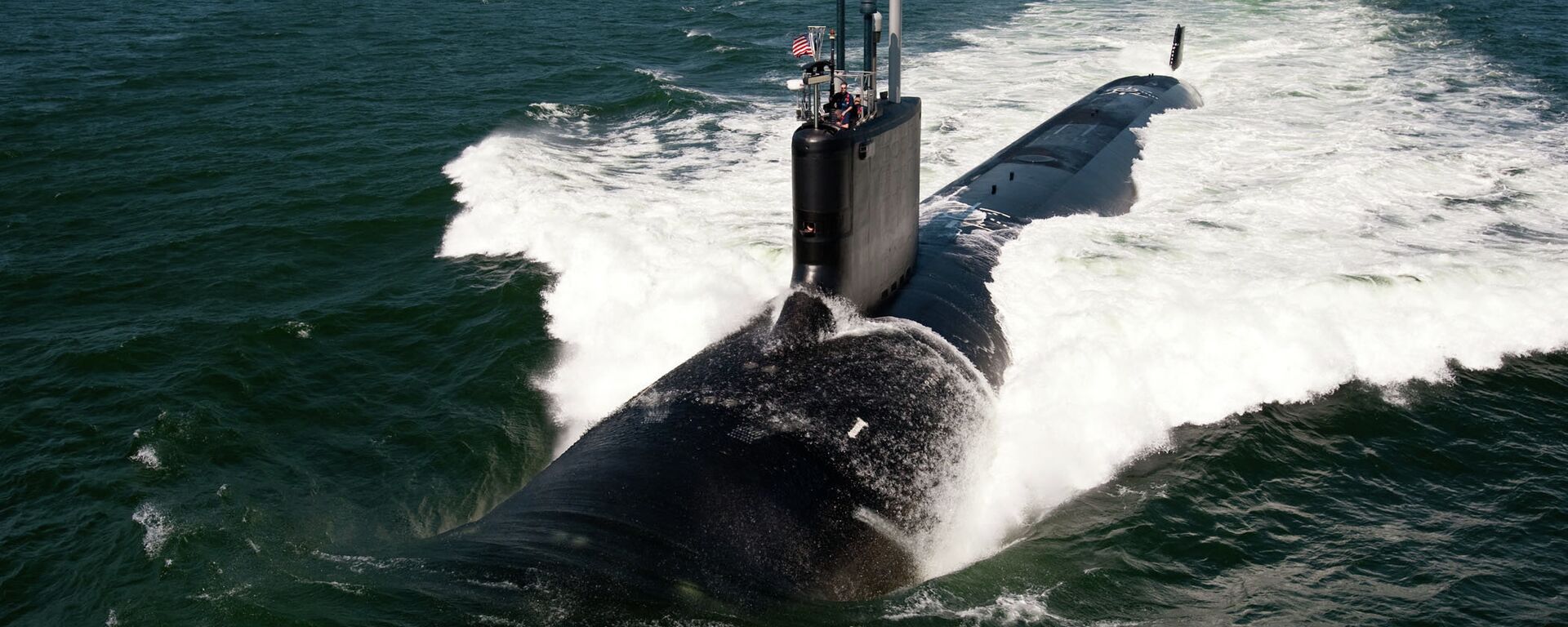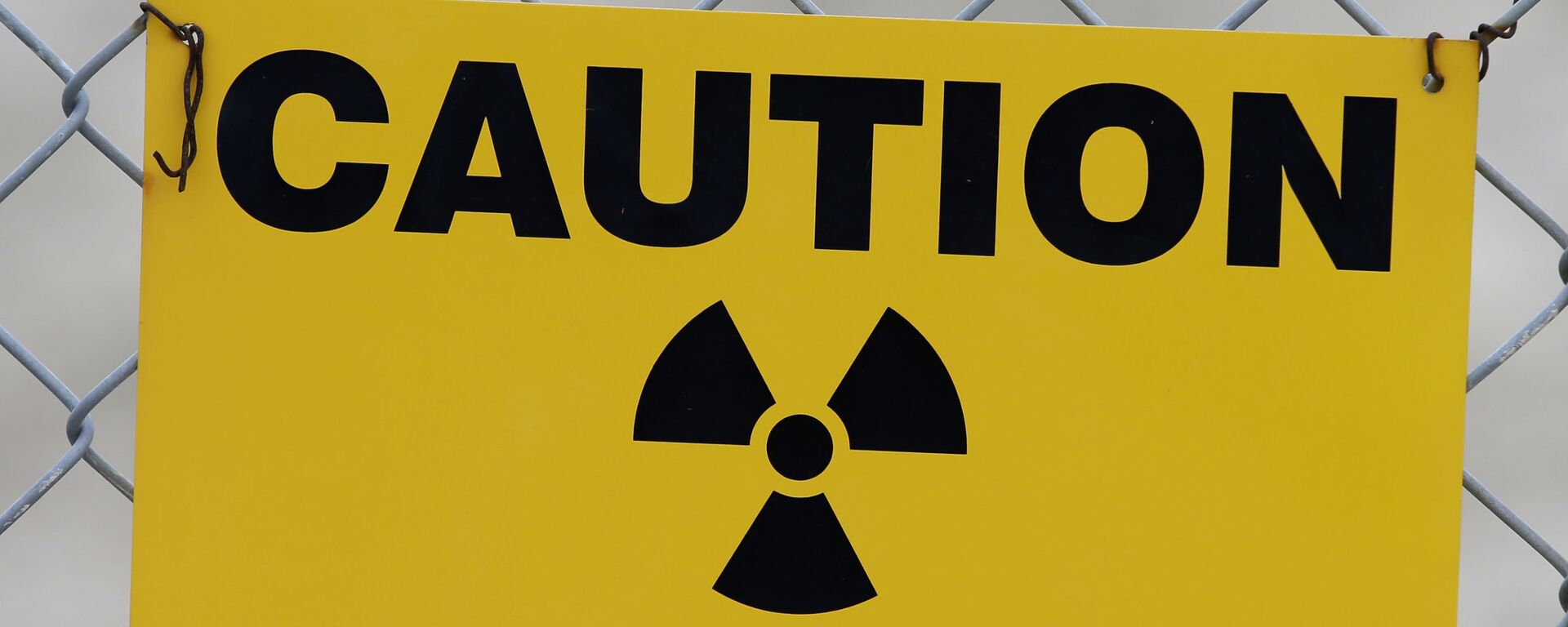How US Nuclear Tests Devastated Marshall Islands
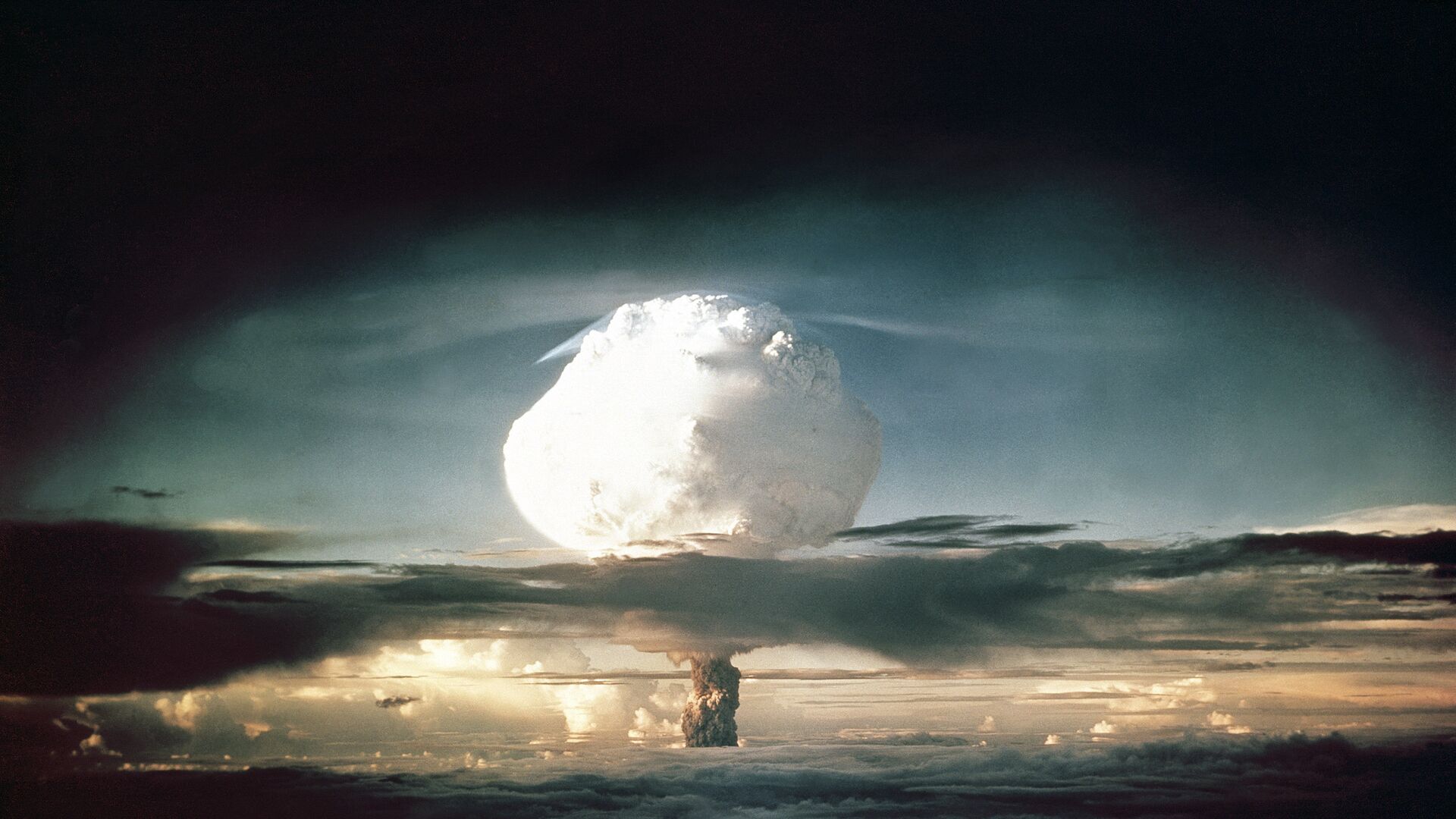
© AP Photo / Los Alamos National Laboratory
Subscribe
On August 29, declared by the UN General Assembly as the International Day against Nuclear Tests, Sputnik looks back on the Marshall Islands which became the main testing ground for American atomic arms during the Cold War.
The Marshall Islands is a country that consists of a chain of volcanic islands and coral atolls in the central Pacific Ocean, between Hawaii and the Philippines. One of the islands of the chain, called Runit, is home to US radioactive waste.
The so-called Runit Dome – a thick 115-meter wide cement structure – holds more than 90,000 cubic meters of radioactive soil and debris, a product of Washington's secretive Cold War nuclear testing program. The cement coffin exterior has been ageing and cracking, raising fears of further contamination.

Aerial view of the Runit Dome. The dome is placed in the crater created by the "Cactus" nuclear weapons test in 1958.
© Photo : Public Domain
Between 1946 and 1958, the US detonated 67 nuclear bombs above ground and underwater off the Marshall Islands. Twenty-three of these tests were carried out at Bikini Atoll, and 44 near Enewetak Atoll. However, radioactive fallout spread throughout the island chains, forcing its population out of homes.
Enewetak Atoll was affected the most by the US Cold War military programs: in addition to nuclear detonations, Washington carried out a dozen biological weapons tests here and dumped 130 tons of soil from its Nevada nuclear testing site, according to the US press.
For its part, Bikini Atoll became the testing ground for the US' largest nuclear detonation ever, Castle Bravo, on March 1, 1954. As per the US media, its flash was even seen from Okinawa, 2,600 miles away. The powerful explosion was part of Operation Castle, a series of thermonuclear tests. Bravo was over 1,000 times more powerful than "Little Boy" – the bomb dropped by the US Air Force on Hiroshima civilians on August 6, 1945.
Why Could the US Conduct Nuclear Tests on the Marshalls?
After centuries of successive colonial rule by Spain, Germany and Japan, the UN made the Marshall Islands a "trust territory" pursuant to a Security Council Resolution of 1947, with the United States designated as the "administering authority."
Under the terms of the UN Resolution 21 (1947), the US was charged with "fostering the development of political institutions, promoting economic, social and educational advancement" of the Marshall Islands. However, Washington exploited and contaminated the territory pursuing its own Cold War agenda.
"The testing of weapons that defined the course and consequences of the Cold War was itself a crucial dimension to the narrative. Further, the central question 'Why conduct nuclear tests?' was fully debated among American politicians, generals, civilians and scientists, and ultimately it was a victory for those who argued in favor of national security over diplomatic and environmental costs that normalized nuclear weapons tests," Professor Joe Siracusa, author of book A History of US Nuclear Testing and its Influence on Nuclear Thought, 1945-1963 (2014), told Sputnik.
"The US chose to test these weapons in the Pacific atolls, distributed mainly between Eniwetok and Bikini. It was a disaster for the locals, as many indigenous Marshallese suffered severe radiation burns and later blood disorders. Those tests have been associated with radiological contamination, fallout and health effects. The inhabitants and the American people were not told the truth at the time but it eventually came out," the professor continued.
'Chosen Ones': How US Nuclear Tests Displaced Marshallese
In 1946, Navy Commodore Ben Wyatt met with 167 inhabitants of Bikini Atoll and asked them to relocate. In reality, however, the residents had no choice. With an air of grim cynicism, the indigenous people were said told their atoll would be used "for the good of mankind" and that they are chosen ones.
Immediately after Wyatt's announcement, the US military started preparations to relocate those living on Bikini Atoll to an uninhabited Rongerik Atoll. After enduring periods of malnutrition due to limited food supplies on Rongerik Atoll, the former residents of Bikini were relocated to Kwajalein Atoll in 1948, where they were housed in tents along the military airstrip. Later, they were moved to Kili, a small island with no lagoon, no protective reef and no fishing grounds. Some of them resettled to Bikini in 1969-1972, but had to flee the place in 1978 due to high radiation levels.
Similarly, in 1948, the US government forced the population of Enewetak Atoll to evacuate as Washington was expanding its nuclear testing. However, relocation to Rongelap, Utirik, and Ailinginae Atolls, did not save the islanders from the nuclear fallout, most of which came from the powerful Castle Bravo test.
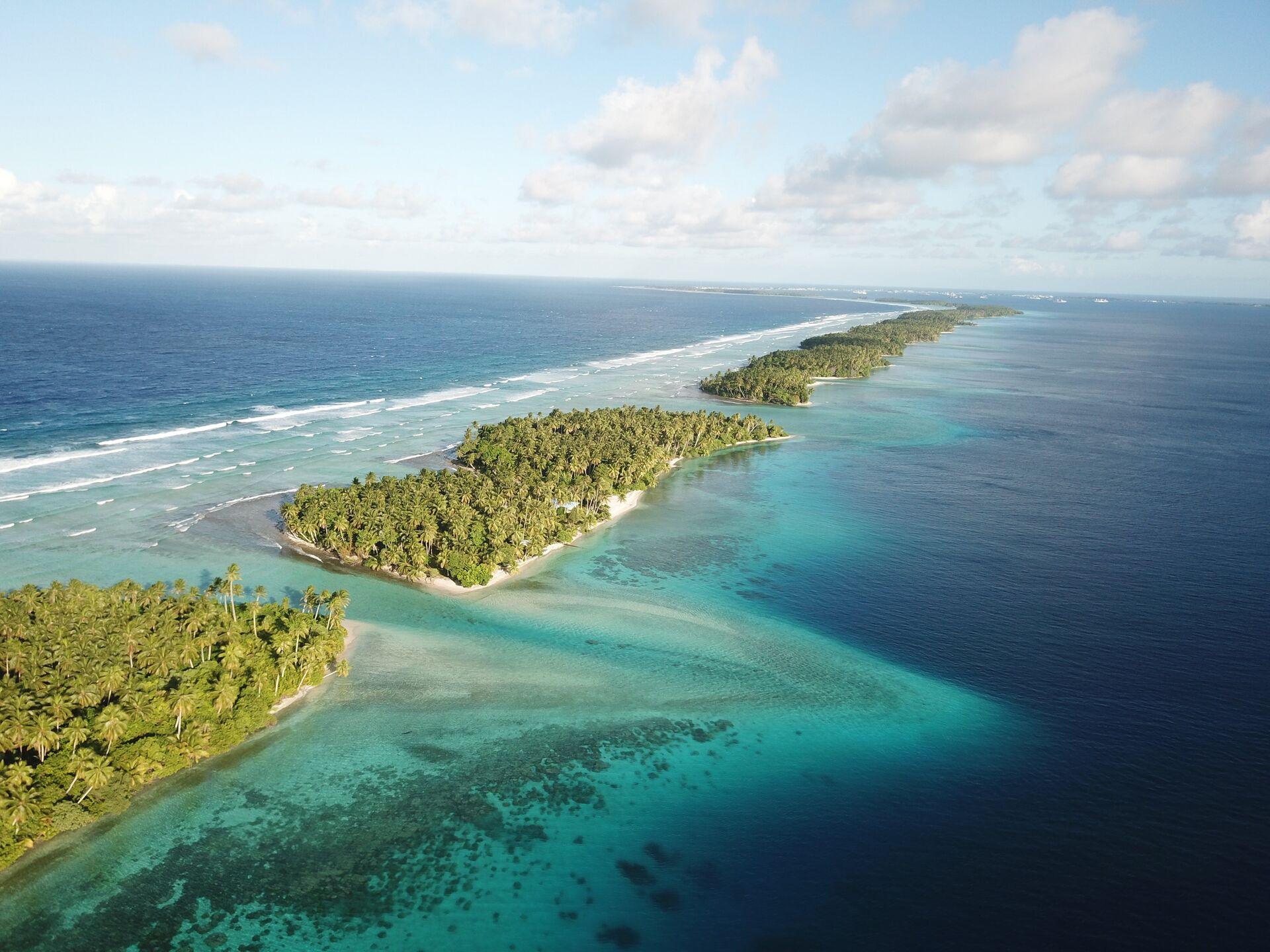
This Oct. 23, 2017 aerial photo shows the thin strip of coral atolls separating the ocean from the lagoon in Majuro, Marshall Islands
© AP Photo / Nicole Evatt
"The environmental impacts from the testing series totally decimated land and marine habitats, including lagoons and coral reefs, and made many of the islands uninhabitable. Nuclear debris and radioactive fallout into the atmosphere contaminated land and water supplies. People’s entire communities and livelihoods were lost," Emily Spiller, PhD Candidate at RMIT University (Melbourne) and 2023-2024 Fulbright Scholar, told Sputnik.
Spiller's research examines transitions in American nuclear policy and strategic thought with an exclusive focus on the US president as the ultimate authority on decisions regarding nuclear weapons.
"Many people were displaced from their homelands due to the testing. Grave impacts to the physical health of those from the contaminated areas continue to exist across generations, including increased risk of cancer and acute radiation poisoning. There were also immediate effects at the time such as vomiting, hair loss, and skin burning," Spiller continued.

Bikini elders, many of whom have not set foot on their island since US nuclear testing began in 1946
© AFP 2023 / GIFF JOHNSON
Were the Marshallese's Complaints Heard?
On May 6, 1954, the Marshallese people filed a petition with the United Nations Trusteeship Council complaining about the US nuclear testing:
"[I]n view of the increasing danger from the experiments with deadly explosives thousands of times more powerful than anything previously known to men, the lethal effects of which have already touched the inhabitants of two of the atolls in the Marshalls, namely, Rongelap and Uterik, who are now suffering in various degrees from 'lowering of blood count,' burns, nausea and the falling off of hair from the head, and whose complete recovery no one can promise with any certainty, we, the Marshallese people feel that we must follow the dictates of our consciences to bring forth this urgent plea to the UN, which has pledged itself to safeguard the life, liberty and the general well-being of the people of the trust territory, of which the Marshallese people are a part," the complaint read.
The Marshallese people said that they were "not only fearful of the danger to their persons from these deadly weapons", but "also concerned for the increasing number of people removed from their land”, and requested that "all experiments with lethal weapons in this area be immediately ceased."
Judging from the 1954 document, the Marshall Islands' inhabitants were desperate and did not believe that the tests by the US could be altogether stopped.
In their petition, they included a provision saying that "if the experiments with said weapons should be judged absolutely necessary for the eventual well-being of all the people of this world and cannot be stopped or changed to other areas due to the unavailability of other locations," then some precautionary measures should be taken to somehow shield the remainder of their population from the further fallout. The language of the document shows how frightened and discouraged they were.
Indeed, the US dangerous nuclear tests continued up until 1958, exacerbating the already acute environmental problems of the island chains.
"The political consequences of nuclear testing involved developing more and more sophisticated weapons which then helped to inform military strategy and doctrine, adding fuel to the nuclear arms race between the United States and Soviet Union at the time (and subsequent countries which acquired the bomb)," said Spiller. "From the American perspective, especially under President Eisenhower, the nuclear testing at this time raised the profile and idea of 'bomb culture' in American society. Where the development of the bomb had previously existed in the utmost secrecy under Presidents Roosevelt and Truman, nuclear weapons testing from 1946 and throughout the 1950s and early 1960s significantly shifted the public’s knowledge and awareness of the new force."
In 1969, the US kicked off a long-term project to decontaminate the Marshall Islands' atolls.
Consequences of Marshall Island's Nuclear Contamination
Later, under the 1990 Compact between the US and the Marshall Islands, Washington accepted "the responsibility for compensation owing to citizens of the Marshall Islands, for loss or damage to property and person of the citizens of the Marshall Islands, resulting from the nuclear testing program which the Government of the United States conducted in the Northern Marshall Islands between June 30, 1946, and August 18, 1958," as per UN documents.
According to a CRS Report, between 1954 and 2004, the United States spent over $500 million on nuclear test compensation and related assistance in the Marshall Islands.
"Declassification of government documents relating to nuclear testing aids ongoing research into this which provides greater clarity on the extent of the humanitarian and environmental damage caused by the nuclear tests. There are studies which demonstrate elevated risks of thyroid cancers, radiation poisoning, and other serious long-term health issues that span generations. I don't think the full extent of this is known just yet," Spiller said.
In 2012, UN Special Rapporteur Calin Georgescu found that radiation from the testing resulted in fatalities and in acute and long-term health complications. The effects of radiation have been exacerbated by "near-irreversible environmental contamination," leading to "the loss of livelihoods and lands," per the report. Furthermore, many people continue to experience indefinite displacement, the special rapporteur warned back in 2012.
Citing the United States Department of Energy, the report said that "the development of thyroid disease, including thyroid cancer in the Marshall Islands, had been linked to the intake of radioactive iodine primarily as a consequence of ingesting hazardous fallout debris particles deposited on food surfaces, eating utensils, the hands and the face, and of drinking contaminated water."
"While radiation sickness is not generational - passed on - the same cannot be said for the soil on which the tests took place," Siracusa remarked, adding that the people are continuing to suffer.
Has Washington Learned Its Nuclear Lesson?
"Most recently, the Biden Administration has taken various measures to improve bilateral relations with the Marshall Islands, including signing a memorandum of understanding (MOU) on a new Compact of Free Association agreement and advising that it 'remains committed to addressing the Republic of the Marshall Islands’ ongoing environmental, public health…and other welfare concerns'," said Spiller.
"I think it is a positive sign to see ongoing research and action at high levels into the humanitarian, health and environmental impacts of the historical nuclear tests. Needless to say much more needs to be done in correcting the course and alleviating suffering of those impacted. I view dialogue and attention in the right places as a step towards progress however it should be an ongoing area of priority and resource allocation from the Government as the effects of nuclear testing continue to impact the daily lives of many communities who don’t possess anywhere near the same resources," she continued.
So, has Washington learnt its lesson well? Unlikely, say some Sputnik interlocutors.
The US is continuing to store its nuclear weapons overseas. The Biden government is pushing ahead with its nuclear-powered submarine deal with Australia in the Asia-Pacific despite regional nations ringing the alarm bells over the potential abuse of non-proliferation treaties and possible nuclear arms race.
The US turned a blind eye to Ukrainian President Volodymyr Zelensky's claim at the Munich Security Council on February 18, 2022, that the Kiev regime could reconsider its non-nuclear status. Likewise, the Biden administration rushed to downplay Russia's legitimate concerns about the Kiev regime's possible false flag including a radioactive "dirty bomb." The issue was smeared in the Western mainstream press as "Russian propaganda," even though Ukrainian experts openly bragged about Kiev's ability to make a "dirty bomb" and even a fully-fledged nuclear bomb quickly prior to the special military op.
Likewise, the Biden administration turned a deaf ear to Russia's warnings that the Ukrainian military's shelling of the Zaporozhye Nuclear Power Plant (NPP) could lead to massive atomic fallout. When the Kiev regime damaged the upper part of the Kakhovka dam - threatening to leave the Zaporozhye NPP without cooling - Washington swiftly shifted the blame on Russia. Similarly, the US administration ignored the risks of the provision of NATO-grade munitions with depleted uranium to Ukraine, despite the gruesome records of environmental and health issues caused by the weapons.
Reflecting on Washington's conduct back in June, Dr. Christopher Busby, a physical chemist and scientific secretary of the European Committee on Radiation Risk, told Sputnik that the West's gamble with nuclear power would end in nothing short of "Mad Max reality" for Europe.
"Those people who are driving this process towards an eventual nuclear exchange have no idea what it will be like. I have studied the effects of radiation on life, not just human life, but all life. The calculations made by those who war-game nuclear exchanges are based on false and obsolete science. The reality is very like Mad Max. In this case Hollywood got it right," Busby emphasized.


